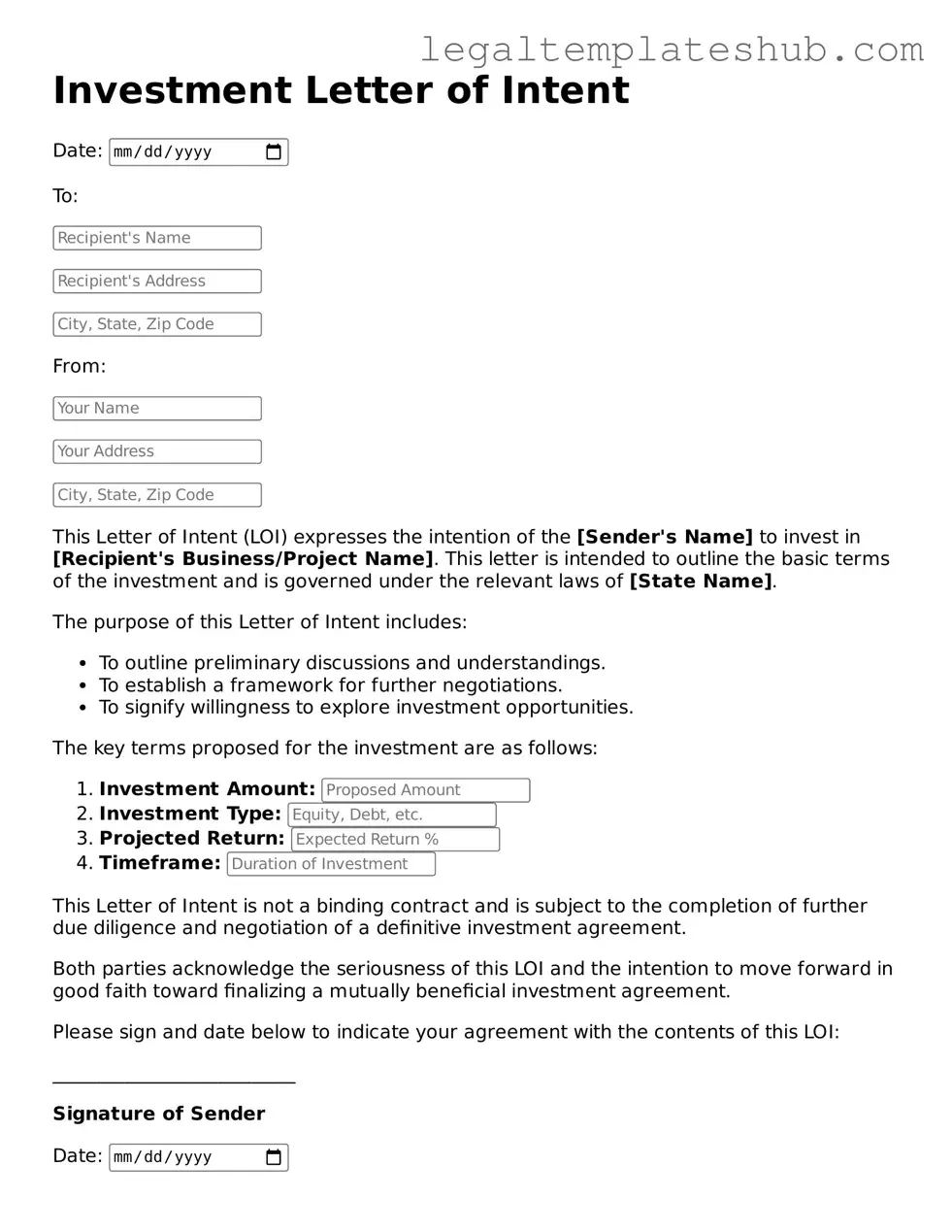Instructions on Filling in Investment Letter of Intent
After obtaining the Investment Letter of Intent form, you will need to fill it out carefully. Completing this form accurately is crucial for moving forward with your investment plans. Follow these steps to ensure you provide all necessary information correctly.
- Start by entering your full name in the designated field.
- Provide your current address, including city, state, and ZIP code.
- Fill in your email address and phone number for contact purposes.
- Indicate the amount of investment you are considering.
- Specify the type of investment you are interested in, such as equity or debt.
- Include any relevant details about the investment opportunity in the comments section.
- Review all the information you have entered for accuracy.
- Sign and date the form at the bottom to confirm your intent.
Once you have completed the form, you will be ready to submit it according to the provided instructions. This step is essential for ensuring your investment process can begin smoothly.
